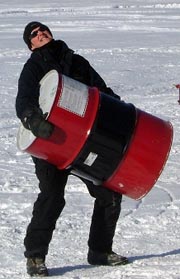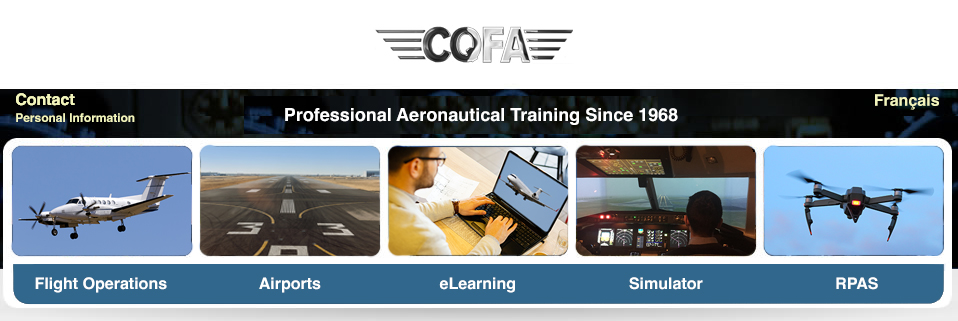Air Safety For Frequent Users
Aim
Enable frequent users of Canadian aviation to better understand and prepare for aviation risks. This training is intended for game wardens and wildlife agents, police officers, nurses, doctors who work in Medevac operations, surveyors and engineers, anyone who as part of their job must use airplanes or helicopters frequently.
At the end of the training, you will be able to:
- Identify hazards around aircraft
- Define the role that the passenger plays
- Recognize the different components of aircraft
- Define what to do in an emergency
- Recognize the importance of safety measures associated with a flight
- Identify factors that influence aircraft performance
- Define what constitutes a good landing area
- Identify the important elements for the safety of your flight
- Formulate what to do in the event of an emergency landing or crash
- Illustrate how to build a temporary helipad
- Explain the use of the sling

Description
The complete training consists of 4 modules:
- Aviation passenger safety
- Human factors
- Elements of Aviation Weather
- Canadian Weather services
The topics covered cover:
- International Civil Aviation Organization (ICAO)
- Transport Canada and NavCanada
- Air Traffic Control (ATC)
- Flight Service Station (FSS)
- Canadian Civil Aviation Safety
- Aeronautical Information Manual (AIM)
- Canada Flight Supplement (CFS)
- Canada Air Pilot (CAP)
- VFR mapping
- Aeronautics Act
- Canadian Air Regulations (CARs)
- Regulatory standards
- Universal communications
- ATIS
- CAVOK
- Radar services
- Flight priorities
- Use of the transponder
- Raising birds and fur animals
- Protection of reindeer, caribou, moose and muskoxen
- Protection of migratory birds
- National, provincial and municipal parks, reserves and refuges
- Temporary flight restrictions – Forest fires
- Noise abatement
- Reckless or negligent use of aircraft
- Status of flight crew members
- Alcohol or drugs, crew members
- Compliance with Instructions
- Air transportation of dangerous goods
- Aviation Safety Investigations
- Transportation Safety Board of Canada (TSB) - statistics
- Requirements for powered aircraft
- Briefing given to passengers
- General rules for the use and flight of aircraft
The learner may select a type of aircraft:
Helicopter safety
- Doors
- Rotors
- Fuel
- Delicate parts of the aircraft
- Flight control surfaces
- Seat position
- Cabin Safety
- Seat and seat belt requirements
- Baggage requirements
- Emergency locator transmitter (ELT)
- Requirements for chemical extinguishers
- First Aid Kit Requirements
- Familiarization with the dashboard
Aircraft safety
- Doors
- Propellers
- Fuel
- Delicate parts of the aircraft
- Flight control surfaces
- Risks and hazards around the aircraft
- TP 15171 - Guidelines for Small Aircraft Passengers
- Seat position
- ELT Requirements
- Baggage requirements
- Requirements for chemical extinguishers
- Familiarization with the dashboard
For more information or to book this course
For more information or to register participants, contact CQFA at (514) 300-2732 ext. 0 or email us by clicking on the link below.
